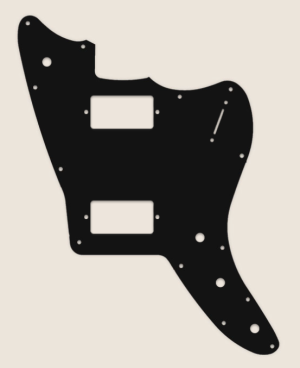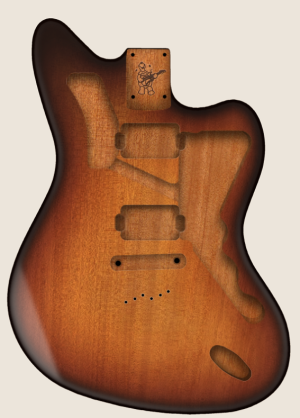autieblesam
Newbie
- Messages
- 11
The plan for this build is to pack in features in a nice aesthetic package. My goal is to have a sort of jack-of-all-trades type guitar with the tradeoff that switching between configurations is relatively slow, i.e. this guitar is not meant for live performance, but is more suitable for just exploring differences in configurations as well as having more tonal range for recording and/or planning live performance. The ability to experiment is the main key for this one.
Starting with the body and neck:
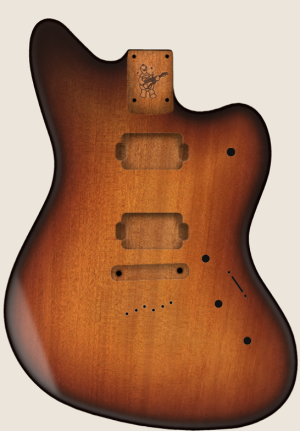
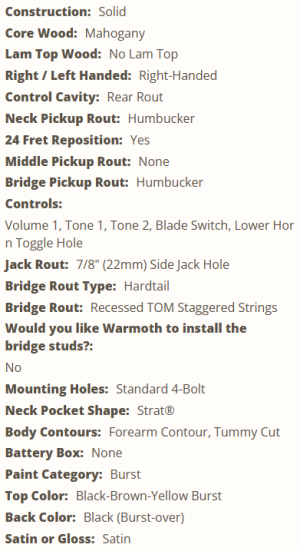
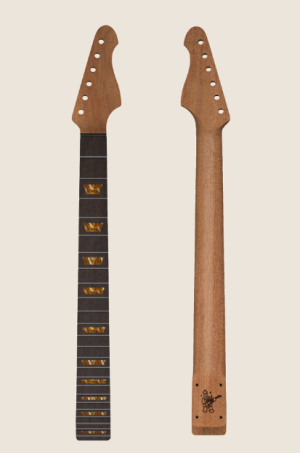
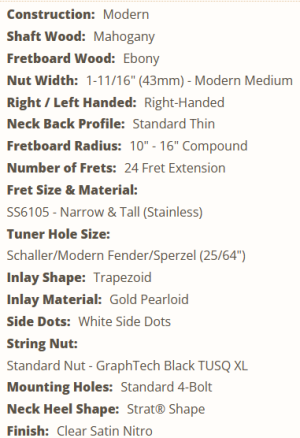
Most of the decisions here are of course primarily aesthetic. I love the look of the black/brown/yellow finish on the mahogany. I am considering requesting custom finish on the neck, though I'm still on the fence on whether I want to match the black outside of the burst on the body, or the yellow inside.
The Jazzmaster is my favorite among the available body styles, but is also a functional decision as Warmoth offers both the blade and toggle switch on this guitar. These are essential for the electronics configuration:
Pickups
I'm open to any feedback, especially from anyone who has experience configuring pan pots or if anyone happens to spot an incompatibility I've overlooked.
Starting with the body and neck:




Most of the decisions here are of course primarily aesthetic. I love the look of the black/brown/yellow finish on the mahogany. I am considering requesting custom finish on the neck, though I'm still on the fence on whether I want to match the black outside of the burst on the body, or the yellow inside.
The Jazzmaster is my favorite among the available body styles, but is also a functional decision as Warmoth offers both the blade and toggle switch on this guitar. These are essential for the electronics configuration:
Pickups
- Bridge: Seymour Duncan JB Standard - gold
- Neck: Lollar Imperial Standard - gold
- Black metal humbucker mounting ring
- Oak Grigsby 4P5T Super Switch
- Position 1 (closer to neck): both pickups in series
- Position 2: neck pickup in parallel; bridge pickup in series
- Position 3: both pickups in parallel
- Position 4: neck pickup in series; bridge pickup in parallel
- Position 5: both pickups in series (Outside positions identical since I'm unable to find a viable 4P4T switch)
- Switchcraft 3-way toggle in standard configuration (bridge active; both active; neck active) - gold
- 3x 500K concentric pots
- Pot 1: top pot bridge tone; bottom pot neck tone
- Pot 2: top pot neck volume; bottom pot neck pan
- Pot 3: top pot bridge volume; bottom pot bridge pan
- 3x modern upper concentric knob - gold
- 3x moddern lower concentric knob - gold
- Pure Tone 1/4" output jack, stereo - gold
- Electrosocket jackplate - gold
- Body routing: StewMac conductive shielding paint
- Routing covers: adhesive copper foil
- String ferules: gold
- Bridge: Gotoh Tune-O-Matic - gold
- Tuning pegs: Schaller M6 Locking Guitar Tuners, 6-In-Line Set, left - gold
- String retainers: barrel-style, pair - gold
- Neck plate: gold
- Strap buttons: Schaller S-locks - gold
- 4P5T super switch
- The key to this one is that there are two wires per pickup that change connection based on whether they are in series or in parallel:
- north end connects to south end in series
- north end connects to ground in parallel
- south end connects to north end in series
- south end connects to output in parallel
- north start always connects to output
- south start always connects to ground
- A mutual ground can be used, but each pickup will need its own hot to drive the stereo functionality
- The key to this one is that there are two wires per pickup that change connection based on whether they are in series or in parallel:
- 3-way toggle
- Rudimentary wiring where position 1 connects neck to output, position 2 both, and position 3 bridge. The key to this one is that the two output lugs must stay separate to divide the pickup channels for stereo
- 500K concentric pot wired for tone
- Each pickup gets its own tone knob with standard wiring: lug 1 is input hot, lug 2 is output hot, lug 3 connects to ground over 0.22µF capacitor
- 500K concentric pots for volume and pan (these will have identical wirings for neck and bridge)
- Top pot: wired for volume over standard wiring: lug 1 is input hot, lug 2 is output hot, lug 3 shorts to ground. Both volume pots will be wired with a Kinman treble bleed circuit, but I haven't worked out the capacitor and resistor specs yet.
- Bottom pot: wired for left/right channel pan: lug 1 left/mono channel hot to tip lug on jack; lug 2 input hot from volume; lug 3 right channel hot to ring lug on jack. Both left/mono channels will connect from each pan pot to tip lug, as will right channel to ring lug
I'm open to any feedback, especially from anyone who has experience configuring pan pots or if anyone happens to spot an incompatibility I've overlooked.
Last edited:



